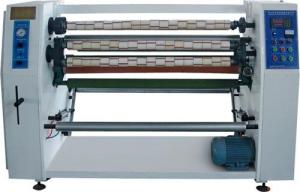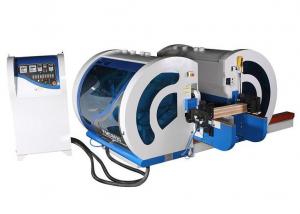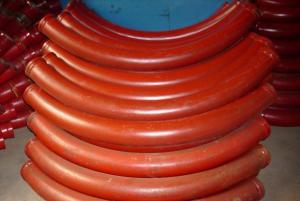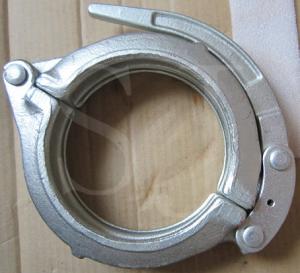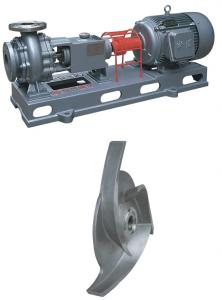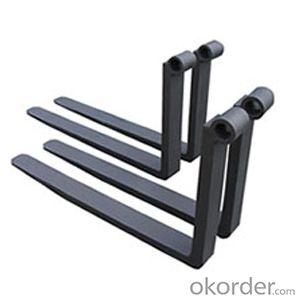Chemical SG Series Dry Rolling Granulation Machine
- Loading Port:
- China main port
- Payment Terms:
- TT OR LC
- Min Order Qty:
- 5 unit
- Supply Capability:
- 50 unit/month
OKorder Service Pledge
OKorder Financial Service
You Might Also Like
Powder granulation technology, as one of the major branch of powder processing, with the requirement of environment protection and the improvement of production process automation, its importance becomes more and more obviously day by day. “Powder product granulated” is the inexorable trend of powder reprocessing technology all over the world.
Processing the powder product into the granules, the major purposes are as the below
3 aspects:
◆Reduce powder dust contamination, improve the working operation condition.
◆Meet the requirements of production process, such as porosity and specific surface
area for improved heat transfer.
◆Improve the physical properties of the product (such as fluidity, permeability, bulk density) to avoid segregation, pulsating, caking, bridges and other adverse effects happen in the follow-up procedure (drying, sieving, metering, metering, batching, etc.) Improve the production automation and closed operations to create the conditions.
Powder granulation techniques are generally divided into two types: wet and dry granulation. The dry method isn’t adding binder. It compacts into flakes/briquettes, and then use crushing, sieving to get granular product. Wet granulation is usually rotary drum, melt, spray and disc granulation. Take agricultural production for example: before the 1920s, chemical fertilizers are applied in powder. Although the powdered fertilizer is easy to mix, there are many weaknesses, such as segregation, agglomeration, poor flowability, and in the application process, it is dusty and get lost. During wet granulation, the wet strength of the capillary effect of liquid adhesion agent plays the utmost important role.When the subsequent drying, the chemical reaction of the group and the crystallization of dissolved matter forms the solid and crystal and makes granule forming. The typical technology is disc granulator, rotary drum and liquidation equipment etc.
The compacting granulation technology without adhesion agent is very competitive. Under normal condition, the granule is not formed through the granules’ solid bridging, but through the action force between molecules forming the granule strength. Due to the distance of action force is short and the sizes of the granule requested are almost same, it needs the external force. The method can adopt compacting material with the prescribed hole diameter or compacting on the two sides of powder).If the compacting happens in the gap of two rollers rotating in reverse, this process is called rolling granulation.
Type Item | SG-240A | SG-360A | SG-500A | SG-600A | SG-650A |
Roller dia. (mm) | Φ240 | Φ360 | Φ504 | Φ600 | 650 |
Effective width (mm) | 80/120/160 | 180 | 300 | 310 | 330 |
Roller rotating speed (r/min) | 5-35 | 3-26 | 14-20 | 12-18 | 10-16 |
Power of feeder (kw) | 4 | 7.5 | 11 | 11 | 15 |
Pre-pressure of | 5 | 6 | 8-10 | 8-10 | 10-14 |
Linear pressure (kn/cm) | 65 | 65 | 70(75) | 70(75) | 70(75) |
Thickness of flakes (mm) | 2-6 | 6-8 | 10-12 | 12-14 | 14-16 |
Compacting productivity(t/h) | 0.8-2 | 2.5-3 | 6-8 | 8-10 | 10-12 |
Final output(t/h) | 0.2-0.6 | 1-1.2 | 2.5-3 | 3-3.6 | 3.5-4.5 |
Granules size(mm) | 1-5 | 1-5 | 1-5 | 1-5 | 1-5 |
Power of compactor (kw) | 11 | 30 | 75 | 90 | 110 |
Installed capacity (kw) | Ca.35 | Ca.50 | Ca.109 | Ca.125 | Ca.165 |
Size of feeder and | 1.85*1.5*1.65 | 2.35*2*2.4 | 3.65*2.25*2.5 | 3.66*2.45*2.7 | 4*2.6*3.3 |
Weight of feeder and | 2.5-3 | 6 | 15 | 20 | 25 |
Delivery tim(day) | 15-30 | 25-30 | 30-45 | 50-60 | 60 |
Operation principle
The dry powder material from the top to join, by deaeration, spiral preload to enter the gap between the rollers, the rollers of great pressure cause the material plastic deformation is compacted into a sheet. The sheet material is then crushed and screened to get the final granular products. The compacting pressure can be adjusted by the hydraulic cylinders according to the requirements of the granulation operation. Different pressure settings can get granular products of different strength.
Characteristics
1.The material is compacted into granules/briquettes through mechanical pressure, without adding any wet agent. The product purity is guaranteed.
2.The process flow has shorter and lower in power consumption as well as less accessory equipment and worker.
3.The dry powder can be granulated directly. No need of further drying.
4.Higher granule strength. Bulk specific gravity improvement is more obvious than other granulation methods.
5.More flexibility in operation.Wide application. The size of granule/briquettes strength can be adjusted through hydraulic pressure.
6.The system is closed loop operation realizing the continuous production
Irregular shaped granulation
1.Ball/oval shaped granulation
2.FGD gypsum granulation
3.Coal power granulation
4.Fertilizer granulation
5.Single fertilizer granulation
6.Nitrogenous phosphate compound fertilizer granulation
7.Humic acid organic fertilizer granulation
8.Fine chemical and chemical raw material
- Q: Why is the volume of the chemical plant bulky
- It's not always huge, and there's always a small volume of equipment for fine chemicals. If the factory USES a large volume of equipment, it means that the factory has this need -- operating income = unit sales volume, so a lot of times scale brings benefits
- Q: What is the chemical oil equipment?
- All kinds of equipment such as compressor, separator, synthetic tower, storage tank, constant pressure relief device, desulfurization, reforming, catalytic cracking etc.
- Q: The chemical plant is used mechanically
- What kind of plants do you see in the heat exchanger and the air cooler
- Q: How to enter oneself for an examination?
- University undergraduate course graduation can take an examination of foundation, foundation test of what we have learned almost all your university, such as advanced mathematics, physics, organic/inorganic chemistry, electrical engineering, principles of chemical engineering, etc., this can be the reference of tianjin university press "certified chemical engineer qualification examination basis to review the course of the two volumes. After the basic examination passes, the undergraduate course graduates five years, the graduate student graduation three years, can take a professional examination. The major is the chemical principle, but the topic is very practical, the major is difficult to test. There is no such thing as an authoritative exam. Enter oneself for an examination to pay attention to the local personnel examination website, general every year in the middle of September, every district advance 1 to 3 months of notice to register. Chemical evidence is compared to other not very good, hang on average year of 1-30 thousand. The other two you said don't have a test yet
- Q: Which equipment should be classified into the main equipment in chemical production?
- The usual chemical equipment is classified as follows: 1. Reaction equipment: glass lining reactor,. Carbon steel, stainless steel reaction kettle, glass lining reactor distillation kettle, stainless steel distillation kettle, enamel tank and other kinds of enamel equipment and pressure vessels, laboratory equipment, laboratory reaction kettle, etc. 2. Heat exchange equipment, heater, pipe heat exchanger, shell and tube heat exchanger, plate, half volumetric water heater tube heat exchanger, condenser, glass lining disc condenser, cooler, water-cooled cooler air cooled. Separation equipment: strainer, filter press, centrifuge, glass rectification tower, stainless steel rectifying tower, compressor, Storage containers: measuring tanks, air storage tanks and various storage tanks, tanks, and preservative storage equipment. Transportation equipment: chemical pump, measuring pump, belt conveyer, screw conveyor, hoist
- Q: What type of anticorrosive paint for chemical equipment pipeline
- Chemical equipment such as pipeline, anticorrosive coatings, first to see whether the base material corrosion environment, such as pipeline through something, on the ground or underground, the second to see your anticorrosion fixed number of year, select appropriate anticorrosive coatings according to different requirements, generally used for chemical equipment pipeline anticorrosion coating with thick film type epoxy coal tar anti-corrosion primer, epoxy rust belt anti-rust primer, high chlorinated polyethylene coatings, chlorosulfonated polyethylene coatings and so on. There is also a change in acrylic for polysiloxane paint. Product - 240. HTML, polyurea paint, etc. Are also used in anti-corrosion design.
- Q: I want to do a professional job, which department is suitable for me? My company mainly does chemical equipment, it is machinery factory.
- Chemical reagent, packing, catalyst filling design, process flow design of chemical equipment, flow analysis simulation, etc
- Q: Is the management of chemical plants harmful to the body
- Chemical equipment management is mainly faced with the following tasks: Technical standard validation of equipment procurement Equipment installation debugging and integrity verification 3, preventive maintenance/maintenance Fail-equipment repair Plan internal maintenance (commonly known as "overhaul") Spare parts management Legal special equipment management
- Q: What kind of packing bags do you need?
- I do plastic wrap, but I don't know what you want to know.
- Q: The overall requirements of the products for the fans are higher
- Other chemical plants such as rubber additives, sulfuric acid, liquid alkali, aniline and cyclohexine are useful for similar equipment
Send your message to us
Chemical SG Series Dry Rolling Granulation Machine
- Loading Port:
- China main port
- Payment Terms:
- TT OR LC
- Min Order Qty:
- 5 unit
- Supply Capability:
- 50 unit/month
OKorder Service Pledge
OKorder Financial Service
Similar products
Hot Searches
Related keywords









